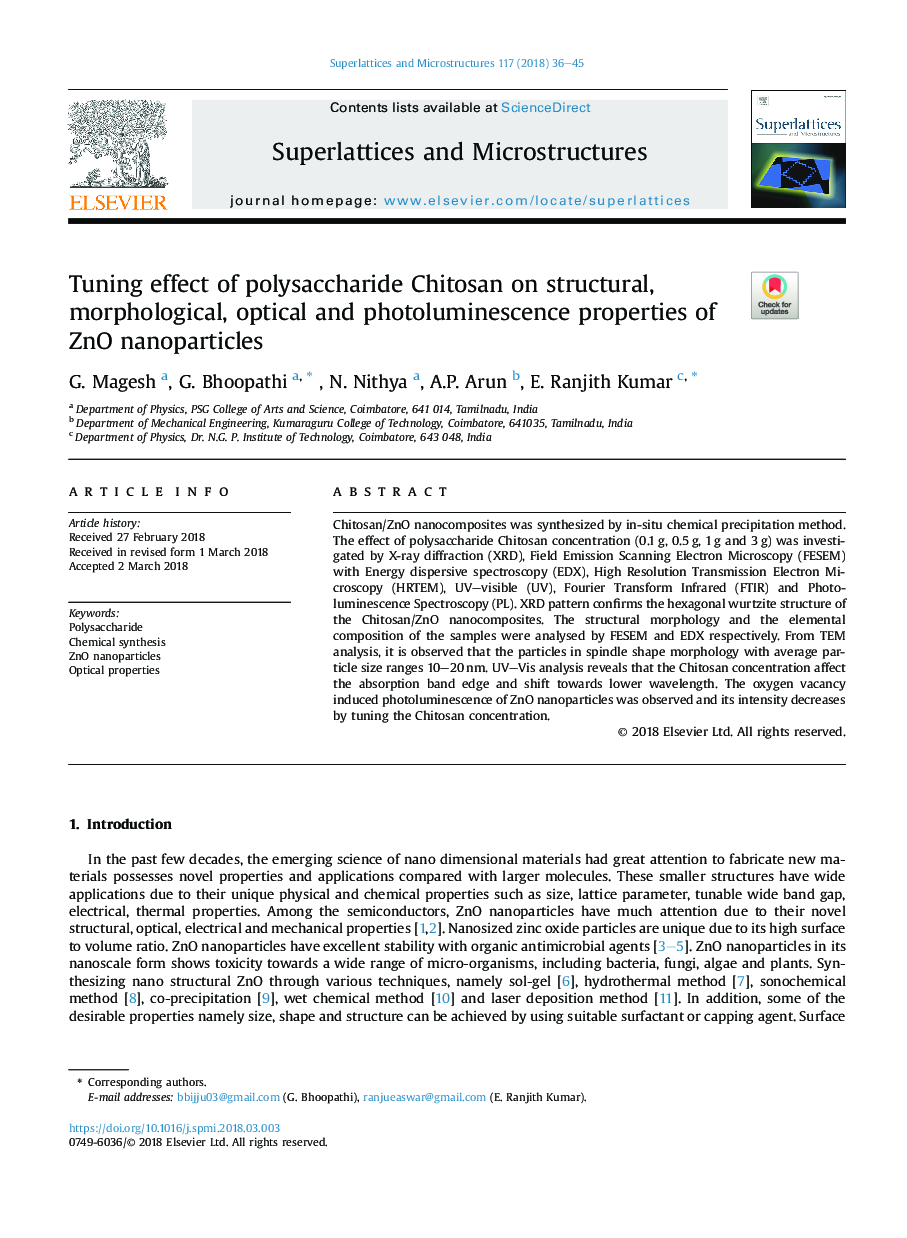| Article ID | Journal | Published Year | Pages | File Type |
|---|---|---|---|---|
| 7938680 | Superlattices and Microstructures | 2018 | 10 Pages |
Abstract
Chitosan/ZnO nanocomposites was synthesized by in-situ chemical precipitation method. The effect of polysaccharide Chitosan concentration (0.1â¯g, 0.5â¯g, 1â¯g and 3â¯g) was investigated by X-ray diffraction (XRD), Field Emission Scanning Electron Microscopy (FESEM) with Energy dispersive spectroscopy (EDX), High Resolution Transmission Electron Microscopy (HRTEM), UV-visible (UV), Fourier Transform Infrared (FTIR) and Photoluminescence Spectroscopy (PL). XRD pattern confirms the hexagonal wurtzite structure of the Chitosan/ZnO nanocomposites. The structural morphology and the elemental composition of the samples were analysed by FESEM and EDX respectively. From TEM analysis, it is observed that the particles in spindle shape morphology with average particle size ranges 10-20â¯nm. UV-Vis analysis reveals that the Chitosan concentration affect the absorption band edge and shift towards lower wavelength. The oxygen vacancy induced photoluminescence of ZnO nanoparticles was observed and its intensity decreases by tuning the Chitosan concentration.
Related Topics
Physical Sciences and Engineering
Materials Science
Electronic, Optical and Magnetic Materials
Authors
G. Magesh, G. Bhoopathi, N. Nithya, A.P. Arun, E. Ranjith Kumar,
